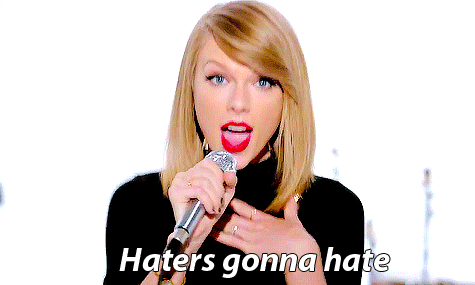
When it comes to job classifications and generalizations, there are still some categories of work that are more closely associated with one gender than the other. In STEM-related fields, men outnumber women more than three to one. According to the American Association of University Women, nearly 70 percent of all jobs in STEM-related jobs are currently occupied by men. That is a shocking figure, considering the number of women who study in STEM higher education. Something has to change.
Various organizations around the US are uniting to get more girls interested in STEM at an earlier age. Slowly but surely, these initiatives are bringing about results and the gender gap is steadily closing. Here’s a snapshot of all of the reasons more women are needed in the STEM-related fields.
Diversity is the Key to Equal Representation
Striving for diversity is not just the right thing to do morally, it is also smart. Science, technology, engineering, and math-related companies are always searching for what will become cutting edge. They want to be the first to develop a new product, come up with the latest programming language, to perfect an existing mechanical component and eliminate the chance for error. And you do that through diversity. Having teams and groups of STEM field employees made up of diverse backgrounds gives each project the benefit of having input from all directions. Companies need older workers who are thinking from a unique and experienced perspective just as much as they need young and knowledgeable employees who will innovate in a different way. Employers need men just as much as they need women to consider ideas and give their opinions. If diversity is the key to equal representation and advancement in STEM, then many more women should be in the field.
Solving the Gender Gap Helps Erase Wage Disparities
Between men and women, there is a disheartening wage disparity that remains in present times. These major wage disparities overall make it more difficult for women to afford daycare, student loans, and even living expenses. This therein makes it more difficult for women to invest in their retirement funds, causing the wage gap to become even larger. Women deserve equal pay for equal work, and having more women enter science, technology, engineering, and math fields means that overall wages for women would go up. This is a problem that has been around for too long, and it is reasonably easy to solve.
New Ideas from New Sources
A hiring spree of women in fields related to STEM would likely bring about lots of new ideas. This occurs whenever a formerly unrepresented class is brought into the professional conversation. At conferences, seminars, symposiums, lectures, and other events in STEM, who are these brainstorming sessions and meetings being led by? What kinds of ideas are they likely to focus on, and how often do they think of those they cannot see? It’s no individual’s fault that women remain underrepresented in STEM, but what has happened is that their concerns are not adequately being acknowledged or addressed. Having more women in the position to participate in and even lead these conversations will lead to many more ideas coming from new sources.
Filling Available Positions Domestically
Tens of thousands of positions in STEM remain vacant as employers are constantly in need of skilled workers. As a result, there is a culture in the US where outsourcing STEM jobs overseas is the norm. While there is nothing wrong with outsourcing jobs overseas when there is a shortage of qualified applicants, that is not what is happening in this case. There are enough women and minorities in the US to fill all of the jobs being filled by non-US residents. The problem is that they are either not applying or not being hired. Hiring overseas and sponsoring visas is expensive, both for the US and employers. Somehow, someway, these employers need to connect with more domestic workers who are suitable to work in STEM, regardless of their background.
Meeting Future Job Demand
The US Bureau of Labor Statistics projects that job demand in STEM will grow at a high rate. Take one look at a place like Silicon Valley, where new start-ups and job listings are popping up at a rate that is difficult to keep up with. Companies like Tesla are not only innovators in STEM; they are having a big impact on the US economy. Their stock price has steadily risen during this economic recession, and they have not stopped hiring. Employers in the STEM fields continue to participate at Expos and conferences featuring consumer electronics innovations that represent many hard hours of work. Demand for jobs in the STEM fields is not slowing down because consumer demand is speeding up. There are many positions that sit unfilled, slowing down progress and making it harder for companies to meet consumer demand. Making positions more readily available to educated women in STEM would be a win for everyone.
Further Innovations for Underrepresented Classes
Recently, NASA held a competition called the Optimus Prime Spinoff Promotion and Research challenged aimed at teens in the US. The challenge was won by a group of black teen girls from Washington, D.C., which was a great day for advocates of women as well as minorities everywhere. Their win was not free from controversy and shock either, as it was discovered that NASA actually had to intervene because of the action of shamefully biased hackers. If the idea of an all-female minority team possibly winning a NASA competition would actually cause this type of reaction, then there is still a lot of ground to cover here. Further innovations should be made for and by underrepresented classes so that the STEM fields have a fair balance.
More Fair and Equal Workplace Cultures
In fields that are dominated by men, companies can sometimes foster a “boy’s club” sort of culture. Toxic workplace environments typically include a copious amount of sexism, misogyny, classism, racism, and other implicit biases. In short, when entire fields such as STEM hire a certain group in the majority, it becomes more common for others to feel unwelcome and discriminated against. Women and minorities have long pointed out that they have encountered these very issues, and going to HR often leads to inaction, further discrimination, or even legal action. Unless there is a cultural shift in the STEM fields, women will continue to be discouraged to even apply for the types of job places where they suspect they would be discriminated against.
Encouraging Girls Get into STEM
Children are encouraged to pretend and make-believe, which therein increases their creativity levels and causes them to dream big. However, not even children are impervious to developing subconscious beliefs that stem from what they see and experience. When schools participate in initiatives such as “Bring Your Child to Work Day,” or “Show and Tell,” kids learn early on that some job classes are just more likely to be occupied by men than women. Subsequently, these children might go on to be more interested in fields that they believe aligns with their gender. Girls are not as interested in STEM or even believe that they are capable of succeeding in these fields because they just don’t see enough women in these positions. Hiring more women to work in STEM would clear up this misconception.
Adding to History
Although underrepresented, women have been involved in STEM throughout their history. Finding the names and learning about the accomplishments of these women in STEM can be difficult simply because they tend to be overshadowed by their male counterparts. Women being included in STEM in the present will only add to their accomplishments and work later in history. If future generations of girls are to believe and think they can become future innovators, they need to see a history of women doing the same.
More Chances for Solving Environmental Issues
Scientists have warned people that there will be major environmental changes taking place in the future, due to global warming. While individuals can have their opinions as to how seriously to take these warnings, the evidence is out there. Nations around the globe have been asked to reduce their carbon footprints by finding new ways to run their cars, heat their homes, and manufacture goods. The only way to resolve these environmental issues is to get everyone involved. Leaders from major world powers should be listened to just as much as the heads of smaller, less dominant countries. Just as both women and men both should have their seat at the tale, young people like Greta Thunberg should be acknowledged. The world has a better chance of survival if women become equally represented in STEM.
Automation is the Future
Men and women both fear their jobs will succumb to automation, but while automation has advantages and disadvantages, as explained in this blog post, human input is still needed. As such, women will always have a role to play in STEM fields.
Women are becoming the company heads of technology-based start-ups, they are becoming teachers in STEM, and they are innovating. While it is hoped that even more women will follow their lead, this level of progress is a good thing. As children become more enchanted by technology, the ultimate goal is having girls take an even higher level of interest.



